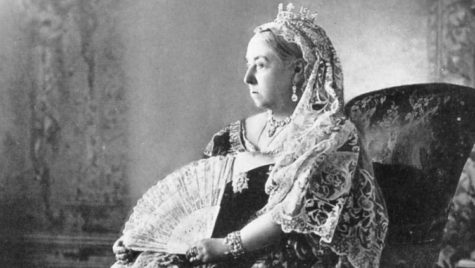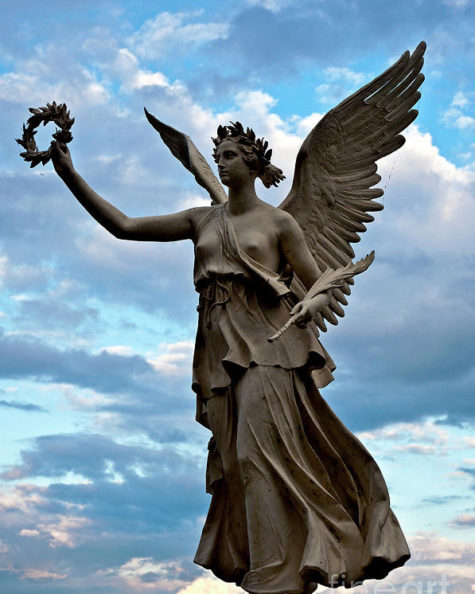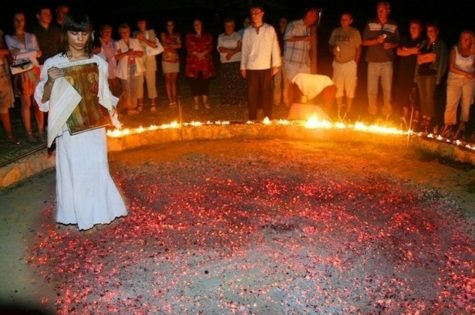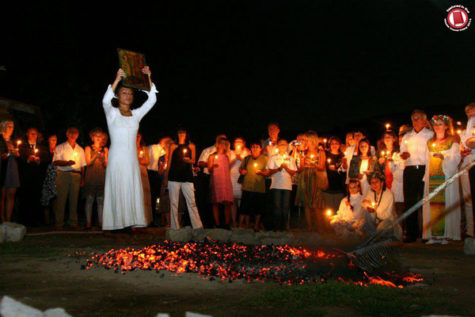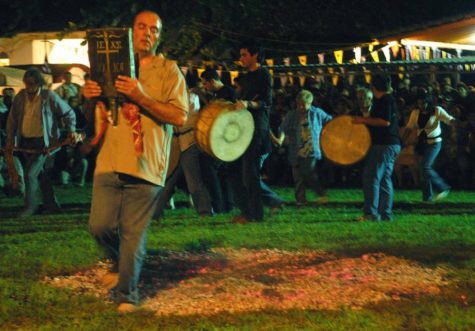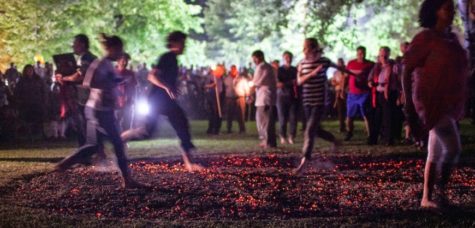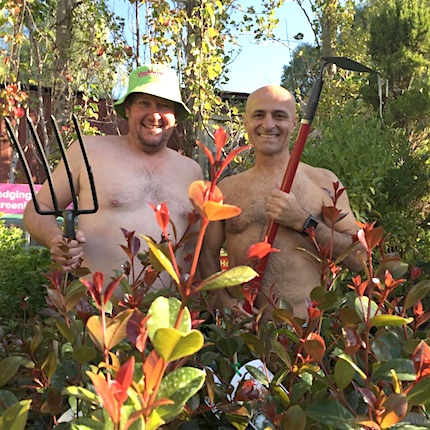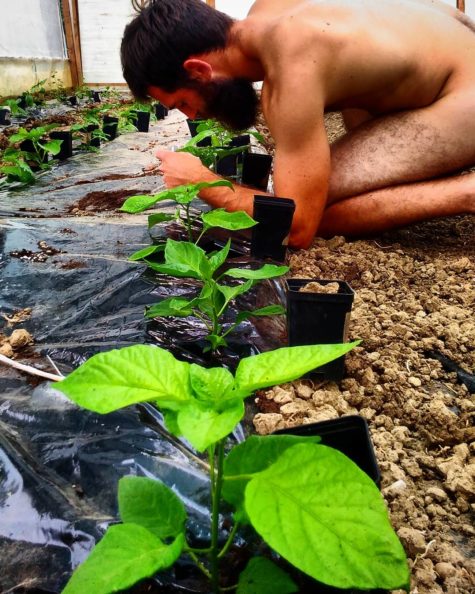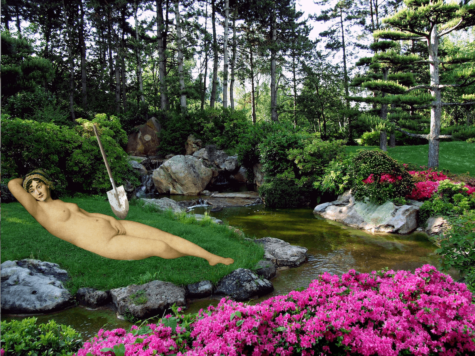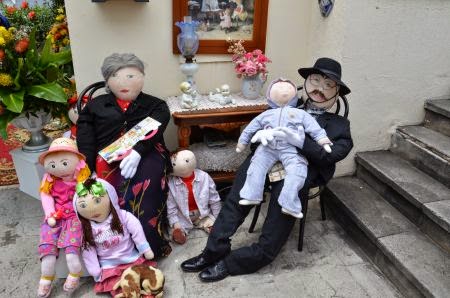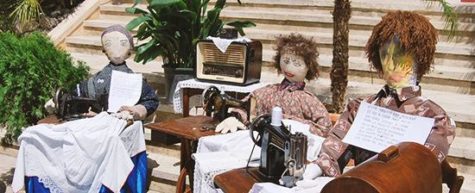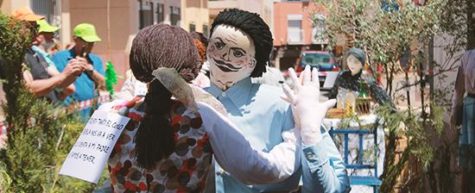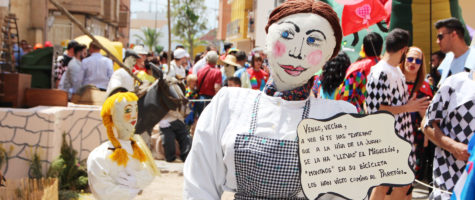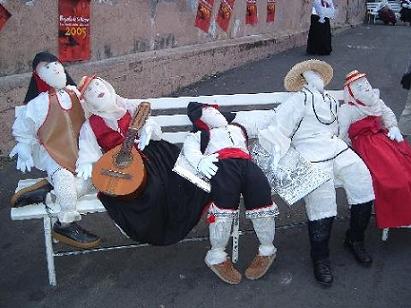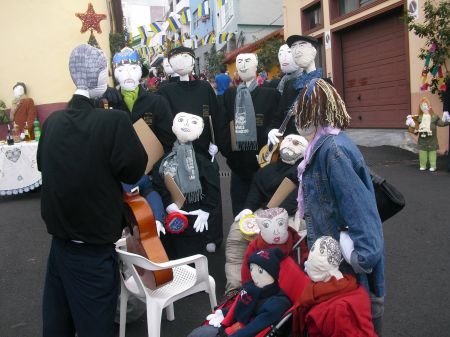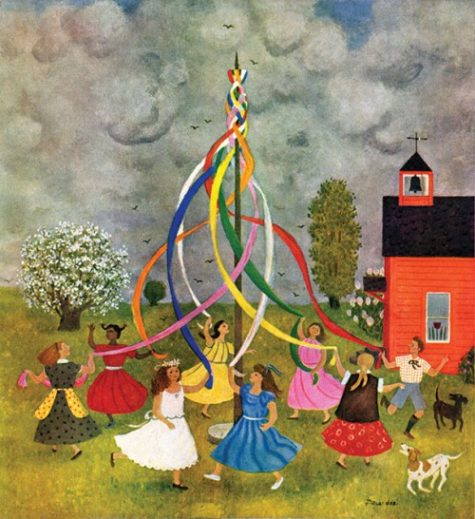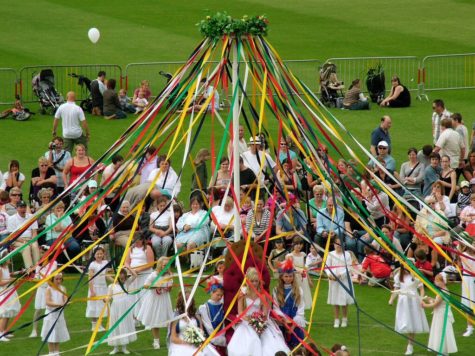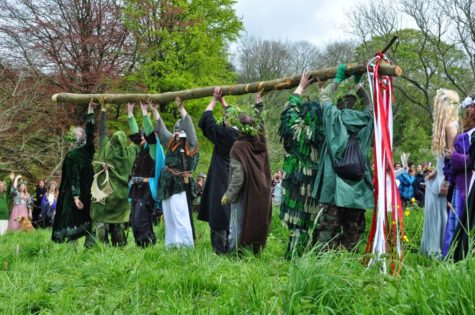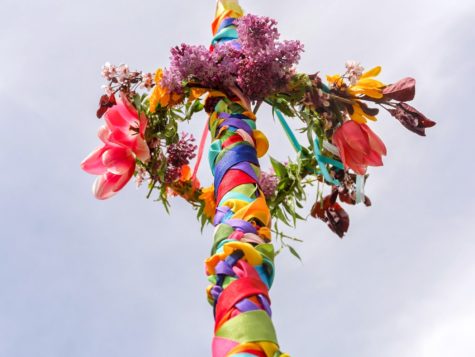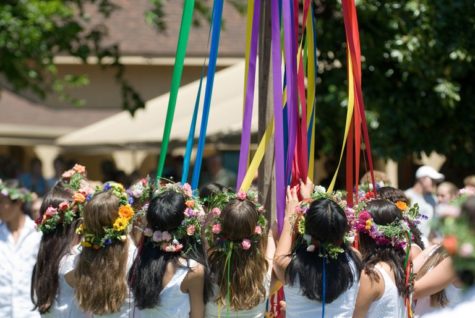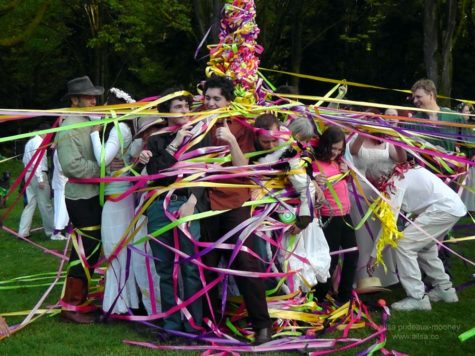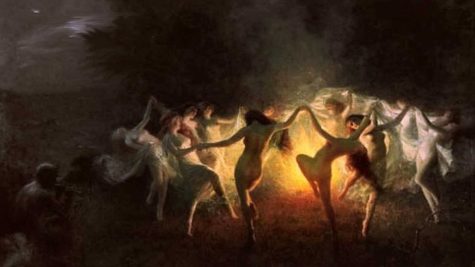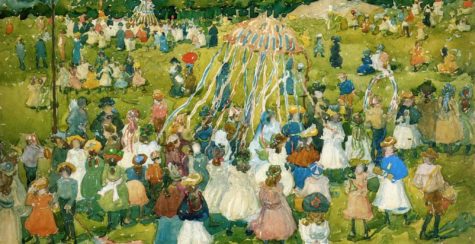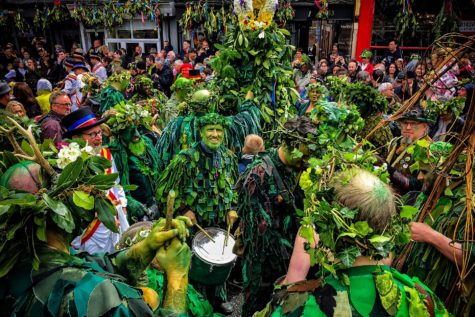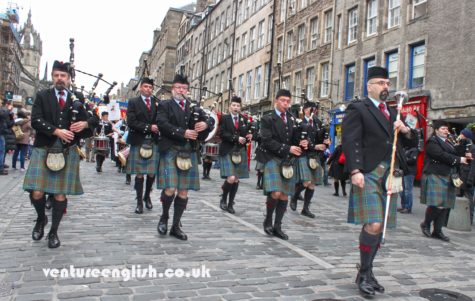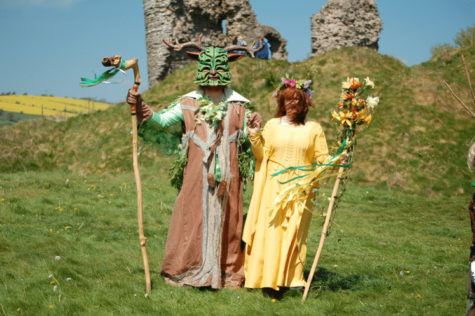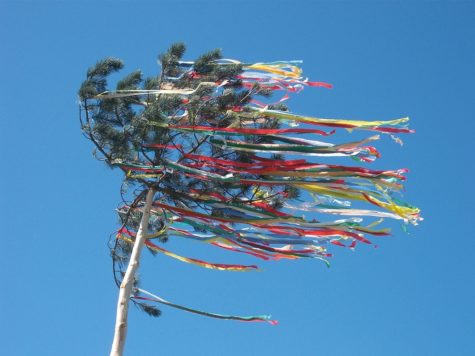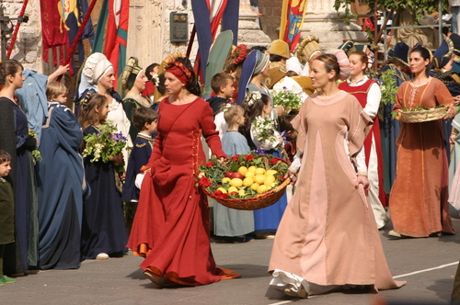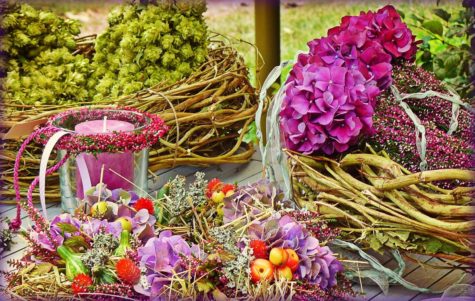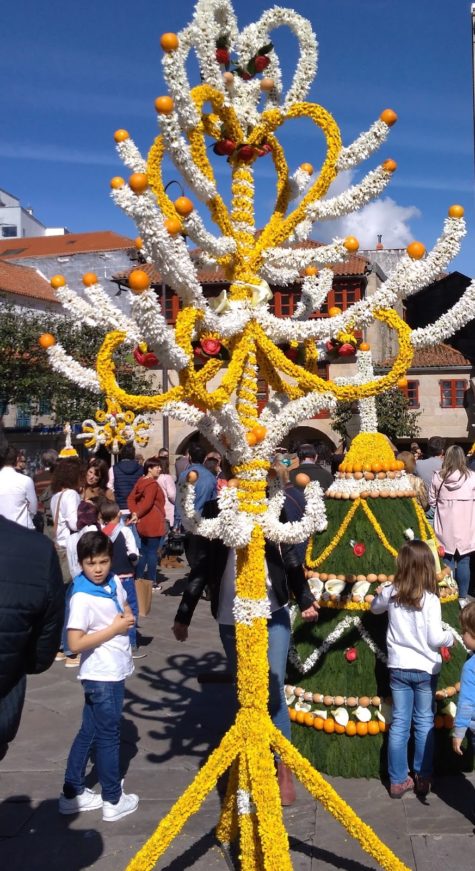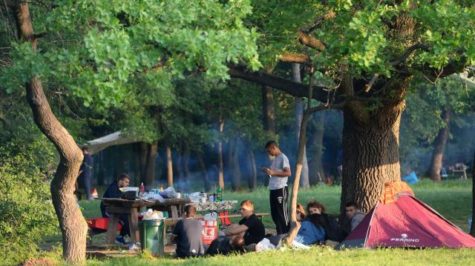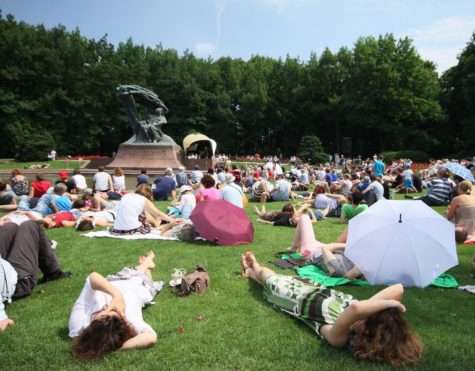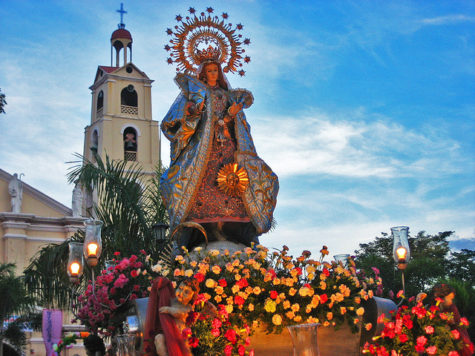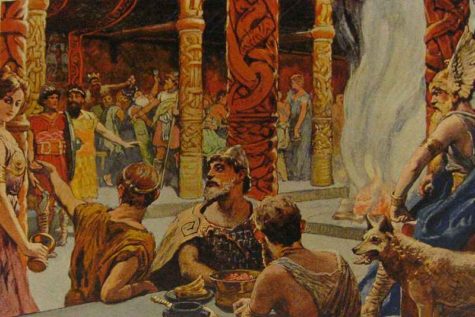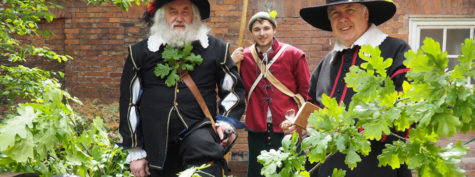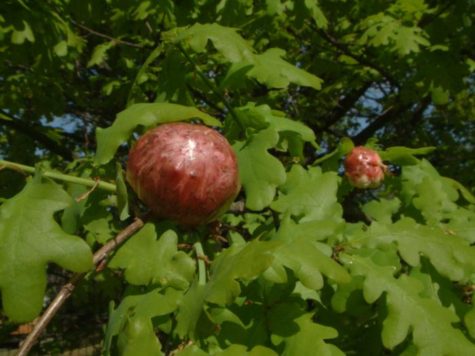May
Victoria Day, also known as May Two-Four, May Long, and May Long Weekend, is a Canadian holiday on the Monday preceding May 25. (In 2019, this falls on May 20).
What Do People Do?
In some cities, fireworks displays or parades are held to mark Victoria Day. One of the most notable parades is held in the city of Victoria, British Columbia, which was named after Queen Victoria. Many people gather in parks to enjoy fireworks displays, which are particularly impressive in Hamilton and Toronto.
For many people, the long Victoria Day weekend marks the end of the winter and the unofficial start of the spring or summer season. After this weekend, gardeners can be reasonably sure that there will be no more frost until the autumn so they can sow or plant out delicate crops and plants.
For the same reason, people with recreational homes in colder parts of the country often go to them to open them up for the summer. In addition, many amusement parks and outdoor attractions open for their summer season this weekend. Notably, stores on Prince Edward Island are permitted to open on Sunday only between Victoria Day and Christmas Day.
The History of Victoria Day
Queen Victoria was born on May 24, 1819. Following the death of 3 uncles and her father, she became Queen of the United Kingdom on June 20, 1837 and reigned until her death on January 22, 1901. During Victoria’s life, the British Empire expanded considerably. However, her powers as Queen of the United Kingdom were reduced as the House of Commons became more important and powerful in British politics.
The monarch’s birthday has been celebrated in Canada since before the beginning of Queen Victoria’s reign. After her death, in 1901, May 25 became known as Empire Day. The sovereign’s official birthday was still celebrated, often on the King’s or Queen’s actual birthday. In 1952, Empire Day was moved to the Monday before May 25 and since 1953, the official birthday of Queen Elizabeth II has been celebrated on this date in Canada. In 1958, Empire Day became known as Commonwealth Day, which was moved to the second Monday in March. The Monday before May 25 then became known as Victoria Day, which is a Canadian statutory holiday.
From 365 Goddess
- Themes: Victory; Success; Excellence
- Symbols: Wings (or feathers); Laurel
- Presiding Goddess: Victoria
About Victoria:
Victoria, as her name implies is the Roman goddess of attainment. Early in the year she inspires resolve within us to do everything we undertake, with excellence as a goal. In works of art, Victoria is often depicted with wings that allow her to surmount any obstacle or problem.
To Do Today:
Drink a tea made from lemon balm, ginger, and a pinch of cinnamon to generate a successful attitude. Remember, if you think you can, you can!
Put a bay leaf (a form of laurel) in your shoe so that Victoria’s triumphant energy can walk with you all day long. Later in the day, burn a few bay leaves on a fire source to fill your home with success. Alternative aromas that invoke Victoria’s favor are rose and red sandalwood.
To make a victory charm, find a feather (or cut paper in the shape of a feather) and empower it with this incantation:
With the wings of Victoria, I will rise
above all areas where trouble lies
Through diligence and mastery I will see
today begins my victory!
Carry this token anytime you feel your confidence waning, or when you need a boost to get over any seemingly insurmountable obstacle.
Sources:
“If the Saint calls you, if you have an open road, then you don’t feel the fire as if it were your enemy,”
Dating back to Pagan times, the Anastenaria is a traditional ritual ritual of fire-walking celebrated in a few places in Northern Greece and in southern Bulgaria, where Greek descendants from Thrace settled in 1923. Every year the Bulgarian and Greek villages if Aghia Eleni near Serres, Langada near Thessaloniki, Kerkini near Serres, some villages on the coast of Evros River and a singular small village near the city of Drama perform this unique annual ritual.
The central figures of the tradition are Saint Constantine and Saint Helen, but all the significant days in this cycle coincide with important days in the Greek Orthodox calendar and are related to various Christian saints.
Along with the fire-walking ritual, the 3-day festival has various processions, music, dancing and an animal sacrifice. On the eve of the feasts of Saints Constantine and Helen, while trance like rhythms of beating drums sound in the background, the Anastenarides take part in dances during which they believe that they are “seized” by the saints, and enter a state of trance. During this trance, they carry the icons of saints Constantine and Helen and dance ecstatically for hours before walking barefoot across hot coals that can reach as hot as 535 degrees Celsius.
The roots of this tradition are seeped in mystery and a bit of controversy as well. The Anastenarides say that the origin of the ritual lies in a fire which took place at Kosti, near the Black Sea in the thirteenth century which set ablaze the church of Saint Constantine. As the empty church burned, the villagers claimed to hear cries coming from the flames and believed that they were the voices of the saints calling out for help. The villagers who braved the flames to rescue them were unharmed, being protected by the saints. Neither the human protectors nor the icons were burned or hurt in any way. This occurrence prompted the annual celebration which the Anastenaria holds to honor their safe delivery.
However, many scholars do not believe this to be the true origin of the Anastenaria rituals. It is largely believed that the ceremony is the survival of an ancient Thracian Dionysian ritual which was later given a superficial Christian interpretation to help receive a better reception from the Greek Orthodox church, which does not support the rituals as they are viewed as pagan. This hasn’t stopped the Anastenarides from celebrating their age old tradition.
The two major events in this cycle are two big festivals, one in January and particularly one in May, dedicated to these two saints. Each of the festivals lasts for 3 days and involves various processions, music and dancing, and an animal sacrifice. The festival culminates with a firewalking ritual, where the participants, carrying the icons of saints Constantine and Helen, dance ecstatically for hours before entering the fire and walking barefoot over the glowing-red coals, unharmed by the fire.
Each village community of Anastenarides is headed by a “group of twelve” who, on the eve of the saints’ day, May 20 Saint Constantine and Saint Helen, gather in the “konaki”, where their holy icons are placed, as well as the “signs” of the saints (semadia), and votive offerings. These are draped with large red kerchiefs (simadia), which are believed to possess the power of the icons.
On the morning of the Saints’ day, May 21, the gather at the konaki and proceed to a well to be blessed with holy water, and sacrifice animals. The rules about the nature of the beasts to be slain are precise, but differ from village to village.
In the konaki they work themselves into a trance-like state through hours of devotional dancing to the music of the Thracian lyre and drum. The main aspect of this festival is at night, when they firewalk. In the evening a fire is lit in an open space, and after dancing for some time in the konaki, the “anastenarides” go to it carrying their ikons. After dancing around it in a circle, individual anastenarides dance over the hot coals as the saint moves them.
They make a huge fire, and when it is down to extremely hot coals, some of them (only some people are “called” to do this) walk and dance on the fire. They believe that during the dance they are “seized” by the saints.
The next day, a ritualistic sacrifice of animals takes place. After lunch the Anastenarides gather again and resume their dancing. A candle is lit from one of the oil lamps in front of the icons, and is used to light a bonfire. When the wood burns, coal is spread down.
Here is a personal account of the experience:
It’s dark outside. The moon hangs in the sky and the soft smell of smoke permeates the warm air as it stings your eyes. Looking down, you notice the glow from burning coals, as hot as 535 degrees C, scattered on the ground below. The trancelike rhythm from the beating drums fills your ears as the Patron Saints Constantine and Helen are honored in the town of Agia Eleni in Northern Greece.
he whole village surrounds you and they share in your moment, as the richness of the surrounding imagery and importance of the ritual consumes the senses. You are in a sublime state of ecstasy as the glowing coals lay before you. But, will you walk across? When Saint Constantine calls you to become a firewalker – you answer – at least if you are one of the Anastenaria.
Initially the Anastenarides dance barefoot around the hot ashes, but when the saints moves them, individuals run across the burning coals. Sometimes devotees kneel down beside the fire and pound the ashes with the palms of their hands. This continues until the ashes are cool.
During the next two days, the Anastenarides proceed around the village visiting each house. On 23 May they conclude with a second dance over the fire, although this one is in private and not for tourists.
The ritual is also performed in January, during the festival of Saint Athanasius, and fire-walking is done indoors.
Sources:
One of the most popular holidays in Japan, Kodomo-no-hi or Children’s Day is celebrate on May 5th. Though it is called Children’s Day today, this holiday is celebrated as “Boy’s Day”. The fifth day of the fifth month is traditionally called Tango no Sekku. Girls have their own festival, called Hina Matsuri (Doll Festival), held on the third day of the third month.
On Kodomo-no-hi families drive bad spirits away and celebrate the prospects of their son’s future. Warrior samurai dolls are put on display in the home.
Koinobori, carp streamers, are flown on flagpoles and from balconies. The carp was chosen because it symbolizes strength and success; according to a Chinese legend, a carp swam upstream to become a dragon. In recent years, as more people have moved into apartments and smaller houses, the carp streamers have also gotten smaller, and there are now miniature versions that are decorated indoors.
Children participate in syobuyu, an ancient ritual, by taking a baths in which the water is sprinkled with iris leaves and roots. This is because the iris is thought to promote good health and ward off evil. Also on this day, families often take Rice cakes wrapped in oak leaves and filled with sweet bean paste, called kashiwamochi, are also eaten.
All these figures: the carp, the samurai, irises, oak trees, and bamboos symbolize strength and courage.
Sources:
People in the United States dedicate the first Sunday in May to commemorating the Humane Society, which was established to prevent cruelty to animals. Numerous organizations schedule fund-raising events today and extend compassion to both animals and people, in keeping with the festivities.
If you have the means, adopt an animal today or make a small donation to the Humane Society in your area so they can continue their work.
Back up your actions spiritually with this spell for animal welfare:
Gather any pictures of endangered species you can find. Put them insize a Ziploc bag while visualizing the white light of protection surrounding each. As you close the bag say:
Protected by Poluknalai’s command,
these creatures are safe across the land.
Sealed with love and magick within,
by my will this spell begins.
As long as the bag remains sealed and safe, it will continue generating protective magick for those animals.
Source: 365 Goddess
World Naked Gardening Day is an annual international event generally celebrated on the first Saturday of May by gardeners and non-gardeners alike. The best way to celebrate today is to have some fun getting naked outside with someone you love.
Yes, it’s true. Every person on the globe who loves both flowers and fig leaves will be tip-toeing through the tulips with nary a stitch on this Saturday. Why? Because planting a tuber in your birthday suit gives you an au naturel joie de vivre that can’t be matched any other way. As Barbara Pollard puts it, “When you’re out there with a gentle breeze on you, every last hair on your body feels it. You feel connected with the natural world in a way you just can’t in clothes.”
Now I know some of you are a little shy about appearing outdoors totally naked, but you shouldn’t be. For one thing, some of our most prominent political leaders are totally on board with it. For example:
Former President Barack Obama: “Once we discard the trappings of clothing, we see that people are just plain folks,” says the President. “We need to focus on things we have in common that bring folks together and gardening naked is one. Count me in.”
World Naked Gardening Day has no political agenda. Thus, it garnered widespread support from Democrats, Republicans, Libertarians, Tea Partiers, and Rush Limbaugh.
Kentucky Senator Mitch McConnell gave naked gardening the thumb’s up. “We’re all about horses in the Bluegrass State,” said Mitch, “and gardening naked makes me feel like a stud.”
Undress yourself of all that is superfluous, walk on the earth barefoot, touch the green leaves of the plants with your own hands and smell them; at least enjoy nature today in all its splendor, as it should really be experienced. Undress! You will feel free!
A Word of Caution
Whether with your friends or all alone, gardening naked has its risks. First of all, men should keep their distance from hedge trimmers, shears, pruners, saws, scythes, and even weed whackers.
Secondly, May marks the beginning of tick season in many areas of the world. So be sure someone spends at least 20 minutes giving you a thorough inspection following your naked day in the garden.
What To Plant
Although you’re free to plant anything you want on World Naked Gardening Day, some plants seem perfect fits. They include:
- ‘Buff Beauty’ rose
- Naked ladies (Lycoris squamigera)
- Fanny’s aster (Symphyotichum oblongifolium ‘Fanny’)
- Madonna lily (Lilium candidum), because Madonna is often naked.
- Led Zepplin’s Robert Plant totally naked… 🙂
What NOT to plant:
- Thorny plants and bushes.
- Cacti.
- Nettles or stinging plants and herbs.
About World Naked Gardening Day
The first annual World Naked Gardening Day took place on September 10, 2005. In 2007, the event date was moved to the first Saturday in May; as of 2018, the event still takes place on the first Saturday in May. In 2018, however, the New Zealand Naturist Federation adopted the last weekend in October as World Naked Gardening Day; this date was deemed to be better suited to the climate of the Southern Hemisphere.
According to NBC’s Today News, WNGD “has become an annual tradition that celebrates weeding, planting flowers and trimming hedges in the buff. While it’s linked to a movement of nudists who promote wholesome and unashamed acceptance of the human body, the day is meant to be funny, lighthearted and non-political, founders say.”
Organizers assert that “besides being liberating, nude gardening is second only to swimming as an activity that people are most ready to consider doing nude”.
Beyond body positivity, Corky Stanton of Clothes Free International, an organization that promotes nude recreation, has asserted that the event offers the “fringe benefits of bare, unabashed recreation: the satisfaction of exercising in the great outdoors; the attractiveness of an all-over tan; more Vitamin D on your whole body; the unbeatable experience of skinny-dipping if the naturist event involves a beach or a lake.”
While the event is most often celebrated in secluded areas, BFC first kicked off the event with its trademark “guerrilla pranksterism” and did a photo shoot in a public park. In another year, Storey and Gabriel enlisted the help of local free beach users at an unofficial clothing-optional beach park on Lake Washington, in Seattle. Many people choose not to venture beyond the relative safety of non-public areas. During the fifth annual World Naked Gardening Day in the United Kingdom, celebrated in 2010, organizers encouraged people to go naked either in their private gardens or in public parks.
Sources:
Los Mayos is a festival that takes place on the first Sunday in May in Alhama de Murcia. Although its origin is unknown and much earlier on, the first written references to it date from the 1920s. The festival consists of placing life-sized dolls dressed in old clothes with human features painted on their faces on doorsteps of houses in order to create a scene. They are normally dressed in clothes from old professions, representing everyday situations, or satirising certain modern-day problems.
The big dolls are made from fabric, stuffed with straw and painted with individual faces. They represent real people and they carry messages written on pieces of paper they either hold in their hands or have pinned to their clothes. They are a sort of caricature.
These dolls are placed over night at houses and public places, so the population awakes to a whole new set of ‘people’. The messages are funny, or express a wish or ridicule a certain attitude or quirk of someone. The dolls remain in place all day, are removed at night and displayed again elsewhere the next day.
Later they enter into a competition. But that’s not all. They also have the corremayos, musicians dressed in harlequin costumes who roam the streets all day, singing and making music, entertaining people.
Source:
May Day is a public holiday usually celebrated on 1 May. It is an ancient Northern Hemisphere spring festival and a traditional spring holiday in many cultures. Dances, singing, and cake are usually part of the festivities.
Ancient spring rites that related human fertility to crop fertility gave birth to most modern May Day festivities. May 1 is the traditional day to crown the May queen, dance around the maypole, perform mummers’ plays, and generally celebrate the return of spring. Although our Pilgrim fathers were horrified by these reminders of a pagan past and outlawed all such activities, the maypole dance remains an enduring event.
In Great Britain, the custom of “bringing in the May” involves gathering “knots,” or branches with buds, on the eve or early morning of May 1. In England, a favorite branch is hawthorn. In Scotland and Wales, people choose the rowan, or mountain ash. In North America, we often select forsythia, lilac, or pussy willow branches to bring spring and the prospect of new life into our homes.
The best known modern May Day traditions, observed both in Europe and North America, include dancing around the maypole and crowning the Queen of May. Fading in popularity since the late 20th century is the tradition of giving of “May baskets,” small baskets of sweets or flowers, usually left anonymously on neighbors’ doorsteps.
In the late 20th century, many neopagans began reconstructing some of the older pagan festivals and combining them with more recently developed European secular and Catholic traditions, and celebrating May Day as a pagan religious festival.
The Maypole
It’s impossible to think of Mayday without thinking of the Maypole. This is perhaps one of the most popular symbols of the season, representing the Divine Marriage between the Lord and Lady of the Greenwood. The pole represents the male principle, and the ribbons that wrap around it (and the wreath placed atop the pole) are symbolic of the female principle.
The Maypole represents the phallus of the God. The wreath atop represents the vagina of the Goddess. As the Maypole is danced, the ribbons wind around the pole and the wreath lowers, symbolizing the Divine Marriage, the sexual union of God and Goddess.
The Maypole Dance
The May Day dance is rich in pagan symbolism. There are usually eight dancers, one for each sabbat of the year, paired into four couples. (Of course, many more may dance. This is only a suggestion.) The dance involves moving in circles and weaving over and under the other dancers. The women take the white ribbons with their right sides to the pole, and the men take the red ribbons with their left sides to the pole.
The weaving of the symbolic birth canal begins with music or chanting as everyone moves forward from where they stand, moving alternately over and under each person coming toward them. (To start, the men begin weaving under the upheld ribbon of the first woman they encounter). Continue the dance until the maypole is wrapped. Tie off the ribbons and let the wreath drop to the ground.
Many folks wear bells when dancing the May dance. Make your steps a cross between a skip and a jog, coming down in time to the music, so that the bells mark off the beats of the music or chant.
May Day Chants
We are the flow and we are the ebb
We are the weavers, we are the web
We are the needle, we are the thread
We are the witches, back from the dead
Weavers, weavers,
We are weaving the web of life.
Weave, weave, weave me a rainbow
Out of the falling rain.
Weave me the hope of a new tomorrow.
Fill my cup again
Lady, weave Your circle tight
With a web of living light
Earth and Air and Fire and Water
Bind us to you.
The Pole
The traditional Maypole is a fir tree that has been stripped of all but its uppermost branches (often the trunk of the Yule tree was saved for the Maypole), but traditions vary. Some use oak; others pine. It may range in height from a few feet to as large as you care to make it. (Bear in mind, ribbon will need to be twice as long as the pole.) With unlimited space outdoors, ten feet is a good length. Of course, in a pinch, even a flagpole would do. For those who have restricted space or who have to celebrate indoors, a 3-4 foot dowel inserted in a wooden base and placed upon the altar will work as well.
If you cut a tree for the Maypole, please ask the tree’s permission before cutting and leave an offering at the base. An offering of food, wine, or flowers is entirely appropriate.
The Ribbons
However many ribbons you use, you will need equal numbers of at least two colors, depending on the number of dancers you’ll have. I recommend at least 6-8 dancers. Ribbons for the pole should be twice as long as the pole and about two to three inches wide. Colors vary according to preference. Traditional colors are red for the God and white for the virgin Goddess. Some use colors of the season — hunter green for the forest, gold for the sun, or purple for the color of grapes and wine. I’ve even heard of people using a rainbow of colors to represent the signs of the zodiac. Some traditions request that dancers bring a ribbon in a color representing a certain blessing they might wish for.
The ribbons can be tied just below the topmost branches of the tree or adhered to the top of the pole with thumbtacks, nails, or glue. In Dancing with the Sun, Yasmine Galenorn recommends making crosscuts on the top end of the pole, tying knots on the end of each ribbon, and threading the ribbons through the slits at the top of the pole. The knots will keep the ribbon from sliding out of the slits as it is woven around the pole.
The Wreath
The wreath should be made on Beltane morning. It is traditional to go to the fields to gather May flowers at this time. Fashion a wreath from greenery and decorate with the first blooms of the season. It must be somewhat bigger than the top of the maypole, taking into account any branches you left at the top, in order that it may fall down the pole as the ribbons are wound.
Consecrate the Maypole
Erection of the Maypole should be carried out with great fanfare. Once the tree has been selected, cut down, and the branches removed, it might be carried in processional to the dance site. Next, a hole must be dug. Pour an offering of water with a pinch of salt or a purifying herb like rosemary into the opening with words like:
Earth Mother, may this offering
Prepare you to receive
This symbol of your consort, our Lord.
Next, anoint the Maypole itself, using altar oil or a mixture of any of the following: myrrh, musk, and/or sweet woodruff. With the oil, make the sign of the solar cross, or the Rune inguz, a rune related to the annual “king’s circuit,” or walking of the land, to ensure the fertility of the land:
At each anointing, say:
Blessed be this tree,
Vehicle of our Lord
Which shall soon enter
Our Mother, the Earth.
When the Maypole has been erected and decorated, light the balefire and celebrate!
Historical May Day Celebrations
The earliest known May celebrations appeared with the Floralia, festival of Flora, the Roman goddess of flowers, held on 27 April during the Roman Republic era, and the Maiouma or Maiuma, a festival celebrating Dionysus and Aphrodite on an unknown date in May every three years. The Floralia opened with theatrical performances. In the Floralia, Ovid says that hares and goats were released as part of the festivities. Persius writes that crowds were pelted with vetches, beans, and lupins. A ritual called the Florifertum was performed on either April 27 or May 3, during which a bundle of wheat ears was carried into a shrine, though it is not clear if this devotion was made to Flora or Ceres. Floralia concluded with competitive events and spectacles, and a sacrifice to Flora.
According to the 6th century chronicles of John Malalas, the Maiouma was a “nocturnal dramatic festival, held every three years and known as Orgies, that is, the Mysteries of Dionysus and Aphrodite” and that it was “known as the Maioumas because it is celebrated in the month of May-Artemisios”. During this time, enough money was set aside by the government for torches, lights, and other expenses to cover a thirty-day festival of “all-night revels.” The Maiouma was celebrated with splendorous banquets and offerings. Its reputation for licentiousness caused it to be suppressed during the reign of Emperor Constantine, though a less debauched version of it was briefly restored during the reigns of Arcadius and Honorius, only to be suppressed again during the same period.
A later May festival celebrated in Germanic countries, Walpurgis Night, commemorates the official canonization of Saint Walpurga on May 1st, 870. In Gaelic culture, the evening of April 30th was the celebration of Beltane (which translates to “lucky fire”), the start of the summer season. First attested in 900 AD, the celebration mainly focused on the symbolic use of fire to bless cattle and other livestock as they were moved to summer pastures. This custom continued into the early 19th century, during which time cattle would be made to jump over fires to protect their milk from being stolen by fairies. People would also leap over the fires for luck.
May Day was abolished and its celebration banned by Puritan parliaments during the Interregnum, but reinstated with the restoration of Charles II in 1660. 1 May 1707, was the day the Act of Union came into effect, joining England and Scotland to form the Kingdom of Great Britain.
Queen Guinevere’s Maying, by John Collier
For thus it chanced one morn when all the court,
Green-suited, but with plumes that mocked the may,
Had been, their wont, a-maying and returned,
That Modred still in green, all ear and eye,
Climbed to the high top of the garden-wall
To spy some secret scandal if he might,
Since the 18th century, many Roman Catholics have observed May – and May Day – with various May devotions to the Blessed Virgin Mary. In works of art, school skits, and so forth, Mary’s head will often be adorned with flowers in a May crowning. 1 May is also one of two feast days of the Catholic patron saint of workers St Joseph the Worker, a carpenter, husband to Mother Mary, and surrogate father of Jesus. Replacing another feast to St. Joseph, this date was chosen by Pope Pius XII in 1955 as a counterpoint to the communist International Workers Day celebrations on May Day.
In the late 19th century, May Day was chosen as the date for International Workers’ Day by the Socialists and Communists of the Second International to commemorate the Haymarket affair in Chicago. International Workers’ Day can also be referred to as “May Day”, but it is a different celebration from the traditional May Day.
May Day Celebrations Around The World
- England
Traditional English May Day rites and celebrations include crowning a May Queen and celebrations involving a maypole, around which dancers often circle with ribbons. Historically, Morris dancing has been linked to May Day celebrations. The earliest records of maypole celebrations date to the 14th century, and by the 15th century the maypole tradition was well established in southern Britain.
In Oxford, it is a centuries-old tradition for May Morning revellers to gather below the Great Tower of Magdalen College at 6 am to listen to the college choir sing traditional madrigals as a conclusion to the previous night’s celebrations. Since the 1980s some people then jump off Magdalen Bridge into the River Cherwell. For some years, the bridge has been closed on 1 May to prevent people from jumping, as the water under the bridge is only 2 feet (61 cm) deep and jumping from the bridge has resulted in serious injury in the past. There are still people who climb the barriers and leap into the water, causing themselves injury.
In Durham, students of the University of Durham gather on Prebend’s Bridge to see the sunrise and enjoy festivities, folk music, dancing, madrigal singing and a barbecue breakfast. This is an emerging Durham tradition, with patchy observance since 2001.
Whitstable, Kent, hosts a good example of more traditional May Day festivities, where the Jack in the Green festival was revived in 1976 and continues to lead an annual procession of Morris dancers through the town on the May bank holiday.
A separate revival occurred in Hastings in 1983 and has become a major event in the town calendar. A traditional sweeps festival is performed over the May bank holiday in Rochester, Kent, where the Jack in the Green is woken at dawn on 1 May by Morris dancers.
At 7:15 p.m. on 1 May each year, the Kettle Bridge Clogs Morris dancing side dance across Barming Bridge (otherwise known as the Kettle Bridge), which spans the River Medway near Maidstone, to mark the official start of their Morris dancing season.
Also known as Ashtoria Day in northern parts of rural Cumbria. A celebration of unity and female bonding. Although not very well known, it is often cause for huge celebration.
Padstow in Cornwall holds its annual Obby-Oss (Hobby Horse) day of festivities. This is believed to be one of the oldest fertility rites in the UK; revellers dance with the Oss through the streets of the town and even through the private gardens of the citizens, accompanied by accordion players and followers dressed in white with red or blue sashes who sing the traditional “May Day” song. The whole town is decorated with springtime greenery, and every year thousands of onlookers attend. Prior to the 19th-century, distinctive May Day celebrations were widespread throughout west Cornwall, and are being revived in St. Ives and Penzance.
Kingsand, Cawsand and Millbrook in Cornwall celebrate Flower Boat Ritual on the May Day bank holiday. A model of the ship The Black Prince is covered in flowers and is taken in procession from the Quay at Millbrook to the beach at Cawsand where it is cast adrift. The houses in the villages are decorated with flowers and people traditionally wear red and white clothes. There are further celebrations in Cawsand Square with Morris dancing and May pole dancing.
- Scotland
May Day has been celebrated in Scotland for centuries. It was previously closely associated with the Beltane festival. Reference to this earlier celebration is found in poem ‘Peblis to the Play’, contained in the Maitland Manuscripts of fifteenth- and sixteenth-century Scots poetry:
At Beltane, quhen ilk bodie bownis
To Peblis to the Play,
To heir the singin and the soundis;
The solace, suth to say,
Be firth and forrest furth they found
Thay graythis tham full gay;
God wait that wald they do that stound,
For it was their feist day,
Thay said, […]
The poem describes the celebration in the town of Peebles in the Scottish Borders, which continues to stage a parade and pageant each year, including the annual ‘Common Riding’, which takes place in many towns throughout the Borders. As well as the crowning of a Beltane Queen each year, it is custom to sing ‘The Beltane Song’.
In Edinburgh, the Beltane Fire Festival is held on the evening of May eve and into the early hours of May Day on the city’s Calton Hill. An older Edinburgh tradition has it that young women who climb Arthur’s Seat and wash their faces in the morning dew will have lifelong beauty. At the University of St Andrews, some of the students gather on the beach late on April 30 and run into the North Sea at sunrise on May Day, occasionally naked. This is accompanied by torchlit processions and much elated celebration.
- Wales
In Wales the first day of May is known as Calan Mai or Calan Haf, and parallels the festival of Beltane and other May Day traditions in Europe.
Traditions would start the night before (Nos Galan Haf) with bonfires, and is considered a Ysbrydnos or spirit night when people would gather hawthorn and flowers to decorate their houses, celebrating new growth and fertility. While on May Day celebrations would include summer dancing and May carols other times referred to as “singing under the wall”, May Day was also a time for officially opening a village green.
- Finland
In Finland, Walpurgis night (Vappu) (“Vappen”) is one of the four biggest holidays along with Christmas Eve, New Year’s Eve, and Midsummer. Walpurgis witnesses the biggest carnival-style festival held in Finland’s cities and towns. The celebrations, which begin on the evening of 30 April and continue on 1 May, typically centre on the consumption of sima, sparkling wine and other alcoholic beverages.
Student traditions, particularly those of engineering students, are one of the main characteristics of Vappu. Since the end of the 19th century, this traditional upper-class feast has been appropriated by university students. Many university-preparatory high school alumni wear the black and white student cap and many higher education students wear student coveralls. One tradition is to drink sima, a home-made low-alcohol mead, along with freshly cooked funnel cakes.
- France
On 1 May 1561, King Charles IX of France received a lily of the valley as a lucky charm. He decided to offer a lily of the valley each year to the ladies of the court. At the beginning of the 20th century, it became custom to give a sprig of lily of the valley, a symbol of springtime, on 1 May. The government permits individuals and workers’ organisations to sell them tax-free on that single day. Nowadays, people may present loved ones either with bunches of lily of the valley or dog rose flowers.
- Germany
In rural regions of Germany, especially the Harz Mountains, Walpurgisnacht celebrations of pagan origin are traditionally held on the night before May Day, including bonfires and the wrapping of a Maibaum (maypole). Young people use this opportunity to party, while the day itself is used by many families to get some fresh air. Motto: “Tanz in den Mai” (“Dance into May”).
In the Rhineland, 1 May is also celebrated by the delivery of a maypole, a tree covered in streamers to the house of a girl the night before. The tree is typically from a love interest, though a tree wrapped only in white streamers is a sign of dislike. Women usually place roses or rice in the form of a heart at the house of their beloved one. It is common to stick the heart to a window or place it in front of the doormat. In leap years, it is the responsibility of the women to place the maypole. All the action is usually done secretly and it is an individual’s choice whether to give a hint of their identity or stay anonymous.
- Ireland
May Day has been celebrated in Ireland since pagan times as the feast of Beltane (Bealtaine) and in latter times as Mary’s day. Traditionally, bonfires were lit to mark the coming of summer and to grant luck to people and livestock. Officially Irish May Day holiday is the first Monday in May. Old traditions such as bonfires are no longer widely observed, though the practice still persists in some places across the country.
- Italy
In Italy it is called Calendimaggio or cantar maggio a seasonal feast held to celebrate the arrival of spring. The event takes its name from the period in which it takes place, that is, the beginning of May, from the Latin calenda maia. The Calendimaggio is a tradition still alive today in many regions of Italy as an allegory of the return to life and rebirth. This magical-propitiatory ritual is often performed during an almsgiving in which, in exchange for gifts (traditionally eggs, wine, food or sweets), the Maggi (or maggerini) sing auspicious verses to the inhabitants of the houses they visit.
Throughout the Italian peninsula these Il Maggio couplets are very diverse—most are love songs with a strong romantic theme, that young people sang to celebrate the arrival of spring. Symbols of spring revival are the trees (alder, golden rain) and flowers (violets, roses), mentioned in the verses of the songs, and with which the maggerini adorn themselves. In particular the plant alder, which grows along the rivers, is considered the symbol of life and that’s why it is often present in the ritual.
Calendimaggio can be historically noted in Tuscany as a mythical character who had a predominant role and met many of the attributes of the god Belenus. In Lucania, the Maggi have a clear auspicious character of pagan origin. In Syracuse, Sicily, the Albero della Cuccagna (cf. “Greasy pole”) is held during the month of May, a feast celebrated to commemorate the victory over the Athenians led by Nicias. However, Angelo de Gubernatis, in his work Mythology of Plants, believes that without doubt the festival was previous to that of said victory.
It is a celebration that dates back to ancient peoples, and is very integrated with the rhythms of nature, such as the Celts (celebrating Beltane), Etruscans and Ligures, in which the arrival of summer was of great importance.
- Greece
Maios (Latin Maius), the month of May, took its name from the goddess Maia (Gr Μαία, the nurse), a Greek and Roman goddess of fertility. The day of Maios (Modern Greek Πρωτομαγιά) celebrates the final victory of the summer against winter as the victory of life against death. The celebration is similar to an ancient ritual associated with another minor demi-god Adonis which also celebrated the revival of nature.
There is today some conflation with yet another tradition, the revival or marriage of Dionysus (the Greek God of theatre and wine-making). This event, however, was celebrated in ancient times not in May but in association with the Anthesteria, a festival held in February and dedicated to the goddess of agriculture Demeter and her daughter Persephone. Persephone emerged every year at the end of Winter from the Underworld. The Anthesteria was a festival of souls, plants and flowers, and Persephone’s coming to earth from Hades marked the rebirth of nature, a common theme in all these traditions.
What remains of the customs today, echoes these traditions of antiquity. A common, until recently, May Day custom involved the annual revival of a youth called Adonis, or alternatively of Dionysus, or of Maios (in Modern Greek Μαγιόπουλο, the Son of Maia). In a simple theatrical ritual, the significance of which has long been forgotten, a chorus of young girls sang a song over a youth lying on the ground, representing Adonis, Dionysus or Maios. At the end of the song, the youth rose up and a flower wreath was placed on his head.
The most common aspect of modern May Day celebrations is the preparation of a flower wreath from wild flowers, although as a result of urbanisation there is an increasing trend to buy wreaths from flower shops. The flowers are placed on the wreath against a background of green leaves and the wreath is hung either on the entrance to the family house/apartment or on a balcony. It remains there until midsummer night.
On that night, the flower wreaths are set alight in bonfires known as St John’s fires. Youths leap over the flames consuming the flower wreaths. This custom has also practically disappeared, like the theatrical revival of Adonis/Dionysus/Maios, as a result of rising urban traffic and with no alternative public grounds in most Greek city neighbourhoods, not to mention potential conflicts with demonstrating workers.
- Bulgaria
On May Day, Bulgarians celebrate Irminden (or Yeremiya, Eremiya, Irima, Zamski den). The holiday is associated with snakes and lizards and rituals are made in order to protect people from them. The name of the holiday comes from the prophet Jeremiah, but its origins are most probably pagan.
It is said that on the days of the Holy Forty or Annunciation snakes come out of their burrows, and on Irminden their king comes out. Old people believe that those working in the fields on this day will be bitten by a snake in summer.
In western Bulgaria people light fires, jump over them and make noises to scare snakes. Another custom is to prepare “podnici” (special clay pots made for baking bread).
This day is especially observed by pregnant women so that their offspring do not catch “yeremiya” — an illness due to evil powers.
- Romania
On May Day, the Romanians celebrate the arminden (or armindeni), the beginning of summer, symbolically tied with the protection of crops and farm animals. The name comes from Slavonic Jeremiinŭ dĭnĭ, meaning prophet Jeremiah’s day, but the celebration rites and habits of this day are apotropaic and pagan (possibly originating in the cult of the god Pan).
The day is also called ziua pelinului (“mugwort day”) or ziua bețivilor (“drunkards’ day”) and it is celebrated to ensure good wine in autumn and, for people and farm animals alike, good health and protection from the elements of nature (storms, hail, illness, pests). People would have parties in natural surroundings, with lăutari (fiddlers) for those who could afford it. Then it is customary to roast and eat lamb, along with new mutton cheese, and to drink mugwort-flavoured wine, or just red wine, to refresh the blood and get protection from diseases. On the way back, the men wear lilac or mugwort flowers on their hats.
Other rites include, in some areas of the country, people washing their faces with the morning dew (for good health) and adorning the gates for good luck and abundance with green branches or with birch saplings (for the houses with maiden girls). The entries to the animals’ shelters are also adorned with green branches. All branches are left in place until the wheat harvest when they are used in the fire which will bake the first bread from the new wheat.
On May Day eve, country women do not work in the field as well as in the house to avoid devastating storms and hail coming down on the village.
Arminden is also ziua boilor (oxen day) and thus the animals are not to be used for work, or else they could die or their owners could get ill.
It is said that the weather is always good on May Day to allow people to celebrate.
- Portugal
“Maias” is a superstition throughout Portugal, with special focus on the northern territories and rarely elsewhere. It may also be referred to by other names, including Dia das Bruxas (Witches’ day), O Burro (the Donkey, referring to an evil spirit) or the last of April, as the local traditions preserved to this day occur on that evening only.
People put the yellow flowers of Portuguese brooms, the bushes are known as giestas. The flowers of the bush are known as Maias, which are placed on doors or gates and every doorway of houses, windows, granaries, currently also cars, which the populace collect on the evening of the 30th of April when the Portuguese brooms are blooming, to defend those places from bad spirits, witches and the evil eye. The placement of the May flower or bush in the doorway must be done before midnight.
These festivities are a continuum of the “Os Maios” of Galiza. In ancient times, this was done while playing traditional night-music. In some places, children were dressed in these flowers and went from place to place begging for money or bread. On the 1st of May, people also used to sing “Cantigas de Maio”, traditional songs related to this day and the whole month of May.
- Serbia
“Prvomajski uranak” (Reveille on May 1st) is a folk tradition and feast that consists of the fact that on May 1, people go in the nature or even leave the day before and spend the night with a camp fire. Most of the time, a dish is cooked in a kettle or in a barbecue. Among Serbs this holiday is widespread. Almost every town in Serbia has its own traditional first-of-may excursion sites, and most often these are green areas outside the city.
- Poland
In Poland, there is a state holiday on 1 May. It is currently celebrated without a specific connotation, and as such it is May Day. However, due to historical connotations, most of the celebrations are focused around Labor Day festivities. It is customary for labor activists and left-wing political parties to organize parades in cities and towns across Poland on this day. The holiday is also commonly referred to as “Labour Day” (“Święto Pracy”).
- Czech Republic
In Czech Republic, May Day is traditionally considered as a holiday of love and May as a month of love. The celebrations of spring are held on April 30th when a maypole (“májka” in Czech) is lifted—a tradition possibly connected to Beltane, since bonfires are also lit on that day. The event is similar to German Walpurgisnacht. It’s public holiday on April 30th. On May 31st, the maypole is taken down in an event called Maypole Felling.
On 1 May, couples in love are kissing under a blooming tree. A cherry, an apple or a birch is most often considered a suitable tree.
- United States
May Day was also celebrated by some early European settlers of the American continent. In some parts of the United States, May baskets are made. These are small baskets usually filled with flowers or treats and left at someone’s doorstep. The giver rings the bell and runs away.
- Hawaii
In Hawaii, May Day is also known as Lei Day, and it is normally set aside as a day to celebrate island culture in general and the culture of the Native Hawaiians in particular. Invented by poet and local newspaper columnist Don Blanding, the first Lei Day was celebrated on 1 May 1927 in Honolulu. Leonard “Red” and Ruth Hawk composed “May Day Is Lei Day in Hawai’i,” the traditional holiday song.
Sources:
- Wikipedia
- Dancing with the Sun by Yasmine Galenorn
- The Sabbats by Edain McCoy
- Ancient Ways by Pauline Campanelli
- Earth Witchery
- Almanac.com
Flores de Mayo (Spanish for “flowers of May”) is a festival held in the Philippines in the month of May. It is one of the May devotions to the Blessed Virgin Mary and lasts for the entire month.
The Santacruzan (from the Spanish santa cruz, “holy cross”) is the ritual pageant held on the last day of the Flores de Mayo. It honors the finding of the True Cross by Helena of Constantinople (known as Reyna Elena) and Constantine the Great. Its connection with May stems from the old May 3 date of Roodmas, which Pope John XXIII abolished in 1960 in favour of the Feast of the Exaltation of the Cross on September 14
Regional Celebrations:
- In the Bicol Region, the ritual begins with the recitation of the rosary, and the last day is simply called the “katapusan”.
- In Western Visayas, the towns have their respective chapels where an image of the Virgin Mary is venerated and children gather to have a simple catechism and teachings about the life and story of Mary. They were also taught some prayers and songs recited only during the Flores de Mayo and the children offer flowers before the image of the Virgin Mary as a symbol of love, affection and veneration.
- Some churches and areas give children paper tickets for actively participating during the catechism and at the end of the month of May, the children redeem the value of the tickets which are school supplies ready for the school opening in June. Santacrusan is usually held during the last few days of May to coincide with the end of the catechism for children.
- Amongst the Tagalog people, the custom began after the publication of Mariano Sevilla’s translation of the devotional “Flores de María” or “Beautiful Flowers that in the Meditations in the Whole Month of May are Offered by Devotees to Mary Most Holy.”
- One famous May tradition in Batangas is the Luglugan, or nightly devotion and party honoring the Virgin Mary. Held in structures called tuklóng, devotees offer flowers and prayers to an image of Mary every night. After the prayer, the Hermanos or Hermanas for the day will give away treats to the participants, followed by the party. The Luglugan lasts for a month until the Tapusan (“ending”) which is marked with a Mass, a Santacruzan and procession of the Blessed Virgin Mary, and capped with a final Luglugan that lasts until the following morning.
- A Santacruzan is a religio-historical beauty pageant held in many cities, towns, and even in small communities throughout the Philippines during the month of May.
The Santacruzan Procession and Pageant
 One of the most colorful aspects of this festival, the pageant depicts the finding of the True Cross by Queen Helena, mother of Constantine the Great. Many movie and television personalities participate in the events and are featured in major santacruzan. This festival became part of Filipino traditions identified with youth, love, and romance.
One of the most colorful aspects of this festival, the pageant depicts the finding of the True Cross by Queen Helena, mother of Constantine the Great. Many movie and television personalities participate in the events and are featured in major santacruzan. This festival became part of Filipino traditions identified with youth, love, and romance.
Prior to the Santacruzan, a novena is held in honor of the Holy Cross. The procession itself commemorates the search of the Holy Cross by Reyna Elena and her son, Emperor Constantine. It is said to have roots in the joyous thanksgiving celebrations that followed the finding of the Holy Cross in Jerusalem and its translation to Constantinople (now İstanbul).
The procession is accompanied by the steady beat of a local brass band, playing and singing the Dios te salve (the Spanish version of the Hail Mary). Devotees hold lighted candles and sing the prayer as they walk. It is customary for males participating in the Santacruzan to wear the traditional Barong Tagalog and that the females wear any Filipiniana-inspired dress.
After the procession in some places, there is the pabítin game (in Cavite, it is called “agaw-bitin”) that serves as a culminating activity for the children. The pabítin is a square-shaped bamboo grille or frame to which goodies (candies, fruits, small trinkets, etc.) are tied with thin strings.
This grille in turn is tied to a long rope passed over a strong branch or pole some 2 metres above the ground. Children then gather under the frame as the it is slowly lowered, and they then jump as high as they could to grab the goodies while someone jerks it up and down repeatedly until all the prizes are gone.
Sometimes the palosebo (the local version of the greasy pole) is also played, where a tall bamboo pole is smeared with grease which participants must climb to get a small red banner or a bag with a prize, such as ₱500 or a higher amount.
For a Magickal Flores de Mayo
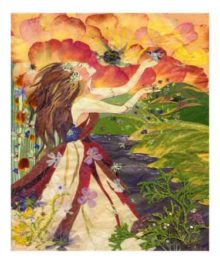 From 360 Goddess, we have a different version of, and way to celebrate the Flores de Mayo. This can be celebrated any time during the month of May, or on the last day, as a sort of magickal Santacruzan.
From 360 Goddess, we have a different version of, and way to celebrate the Flores de Mayo. This can be celebrated any time during the month of May, or on the last day, as a sort of magickal Santacruzan.
- Themes: Offering; Prayer; Love; Devotion; Home; Relationships
- Symbols: Spring; May Blossoming Flowers
- Presiding Goddess: Sisina
About Sisina:
This Filipino goddess oversees the realms of orderliness, beauty, and love. Traditionally, she protects marriages against discord, but she may also be called upon to settle inner turmoil within your soul and restore self-love.
To do today:
People in the Philippines say good-bye to May with bouquets, flower offerings, and an array of sweet foods to honor the month’s sweetness and beauty. Sometimes they ask Sisina to join the festivities by setting a place for her at the table.
This particular custom appears in several other cultures and it is a simple, lovely way of honoring the goddess. Just leave a plate with a fresh flower on your dinner table. This draws Sisina’s presence, love, and peaceful nature to your home and family relationships. If you wish, also leave an offering of sweet bread or fruity wine in a special spot to thank her.
As you go about your normal routine today, take time to enjoy any flowers you see, and be very considerate of the special people in your life. Sisina will see the effort and continue blessing those relationships with harmony.
Sources: 365 Goddess and wikipedia
Memorial Day is the day meant to be set aside to specifically honor the war dead. As such, it is an appropriate day to observe rituals to honor the Einherjar: the battle-slain warriors who are taken to Valhalla.
Who are the Einherjar? They are an army of all men who fall in battle, they are adopted as Odin’s sons. He allots to them the halls Valhalla and Vingólf. There they await Ragnarok, when they will join the Gods in fighting the Giants. They spend most of their time fighting, eating, and drinking.
Of course, not all of the battle-slain go to Valhalla some also go to Freya’s Hall, but many modern pagans will honor the war-dead, especially their ancestors who served at this time.
Others will honor the Einherjar on Veteran’s Day instead, even though, technically Veteran’s Day is intended to first and foremost honor those living Veterans from past military service, it is also used to honor those currently serving, and to a lesser degree those soldiers now dead.
For more about the Einherjar – read on…
In Norse mythology, the Einherjar (Old Norse “lone fighters”) are those that have died in battle and are brought to Valhalla by Valkyries. In Valhalla, the Einherjar eat their fill of the nightly-resurrecting beast Sæhrímnir, and are brought their fill of mead (from the udder of the goat Heiðrún) by Valkyries. The Einherjar prepare daily for the events of Ragnarök, when they will advance for an immense battle at the field of Vígríðr.
“Valholl is widely spread out;
here Odin chooses every day
weapon-slain warriors…”
In Norse cosmology, those that die in battle hold a special role within Asatru. They are the Einherjar, those that are chosen by Odin to fight on the side of the Gods at Ragnorak. (see explanation below)
Accounts of Valhalla describe it as a large hall, decked with the implements of battle. The Einherjar are described as being well-hosted, they are fed on pork and mead, and each day, the Einherjar practice at the art of battle. They engage one another in terrible, bloody conflicts, and at the end of the day, come back to life, and walk off the field, the best of friends.
All the Einheriar fight in Odin’s courts every day;
they choose the slain and ride from battle;
then they sit more at peace together.
It seems probable that historically, the Einherjar could be best described as some sort of “elite” troops, and that going to Valhalla was not necessarily the fate of the common soldier. Odin was traditionally followed by members of the ruling classes, not by ordinary folk. Adding to this the idea of the Einherjar fighting day after day, and enjoying it immensely does seem more in line with an elite unit, it seems likely that an ordinary draftee might get a little tired of day after day of fighting.
In actual modern-day practice, Einherjar blot has tended to become a day to honor all of those who die in wars, and to a lesser extent, veterans in general. How exactly does one reconcile these two different images of the Einherjar? One thing is clear, it was never a part of old Norse thought to hold to one view of the afterlife. Where you ended up after your death seemed reliant on which Gods you followed in life, and what sort of person you were.
Hail those that serve!
Hail the fallen!
Hail the Einherjar!
Note:
In Norse mythology, Ragnarök (Old Norse “final destiny of the gods”) is a series of future events, including a great battle foretold to ultimately result in the death of a number of major figures (including the gods Odin, Thor, Týr, Freyr, Heimdall, and Loki), the occurrence of various natural disasters, and the subsequent submersion of the world in water.
Afterward, the world will resurface anew and fertile, the surviving and reborn gods will meet, and the world will be repopulated by two human survivors.
Sources: Wikipedia and Raven Kindred
Oak Apple Day or Royal Oak Day was a formal public holiday celebrated in England on 29 May to commemorate the restoration of the English monarchy, in May 1660. Parliament declared this to be a public holiday, “to be for ever kept as a day of thanksgiving for our redemption from tyranny and the King’s return to his Government, he entering London that day.”
People wore sprigs of oak and decorated homes, boats, barns and (latterly) even railway engines. There was dancing, maypoles, and the streets were hung with oak branches. Anyone who failed to wear a sprig of oak risked being pelted with bird’s eggs or thrashed with nettles. In Sussex, those not wearing oak were liable to be pinched, giving rise to the unofficial name of “Pinch-bum Day”; similarly it was known as “Bumping Day” in Essex.
The Chelsea Pensioners still wear oak leaves on their Founders Day (which is always as close as possible to 29th May) as the Royal Hospital of Chelsea was founded by Charles II. They also decorate the statue of Charles II there with oak leaves and branches.
In Upton Grey, Hampshire, after the church bells had been rung at 6 a.m. the bell-ringers used to place a large branch of oak over the church porch, and another over the lych gate. Smaller branches were positioned in the gateway of every house to ensure good luck for the rest of the year.
These ceremonies, which have now largely died out, are perhaps continuations of pre-Christian nature worship.
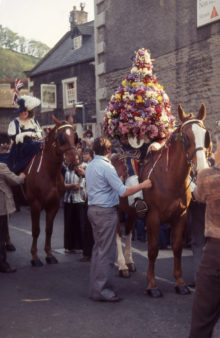 The Garland King who rides through the streets of Castleton, Derbyshire, at the head of a procession, completely disguised in a garland of flowers which is later affixed to a pinnacle on the parish church tower, can have little connection with the Restoration, even though he dresses in Stuart costume.
The Garland King who rides through the streets of Castleton, Derbyshire, at the head of a procession, completely disguised in a garland of flowers which is later affixed to a pinnacle on the parish church tower, can have little connection with the Restoration, even though he dresses in Stuart costume.
He is perhaps a kind of Jack in the Green and the custom may have transferred from May Day when such celebrations were permitted again after having been banned by the Puritans.
The public holiday, Oak Apple Day, was formally abolished by the Anniversary Days Observance Act 1859, but the date retains some significance in local or institutional customs.
Events still take place at Upton-upon-Severn in Worcestershire, Aston on Clun in Shropshire, Marsh Gibbon in Buckinghamshire, Great Wishford in Wiltshire (when villagers gather wood in Grovely Wood), and Membury in Devon. The day is generally marked by re-enactment activities at Moseley Old Hall, West Midlands, one of the houses where Charles II hid in 1651.
Fownhope, Hereford have an ongoing tradition in the celebration of Oak Apple Day. The Fownhope Heart of Oak Society organize an annual event, where members of the society gather at the local pub and march through the village holding flower and oak leaf decorated sticks, whilst following the society banner and a brass band. The march goes first to the church for a service, and then to houses who host refreshments.
The Heart of Oak Society was previously a friendly society, but had to reform in 1989 to keep the tradition going. Although Oak Apple Day celebrations have decreased in popularity and knowledge, Fownhope has managed to keep the event going, increasing in popularity and turn-out every year.
At All Saints’ Church, Northampton a statue of Charles II is wreathed at noon every Oak Apple Day, followed by a celebration of the Holy Communion according to the Book of Common Prayer.
At some Oxford and Cambridge colleges a toast is still drunk to celebrate Oak Apple Day.
Oak Apple Day is also celebrated in the Cornish village of St Neot annually. The Vicar leads a procession through the village, he is followed by the Tower Captain holding the Oak bough. A large number of the villagers follow walking to the Church. A story of the history of the event is told and then the Vicar blesses the branch. The Tower Captain throws the old branch down from the top of the tower and a new one is hauled to the top.
Everyone is then invited to the vicarage gardens for refreshments and a barbecue. Up to 12 noon villagers wear a sprig of “red” (new) oak and in the afternoon wear a sprig of “Boys Love” (Artemisia abrotanum); tradition dictates that the punishment for not doing this results in being stung by nettles.
What is an Oak Apple?
An oak apple is a mutation of an oak leaf caused by chemicals injected by the larvae of certain kinds of gall wasp laying an egg which becomes a larva inside the gall. In some parts of the country it is known as a “shick-shack.”
Oak apples (or galls) were also used to divine the future or to check if a child had been bewitched. Some of the meanings of what was found inside are as follows:
- An ant – plenty of grain to come
- A spider – ‘pestilence among men’
- A white worm or maggot – ‘murain of beasts’
- A flying worm – war
- A creeping worm – a scarce harvest
- A turning worm – plague
People would also wear oak bark and galls woven into balls as healing charms.
Source: Wikipedia

